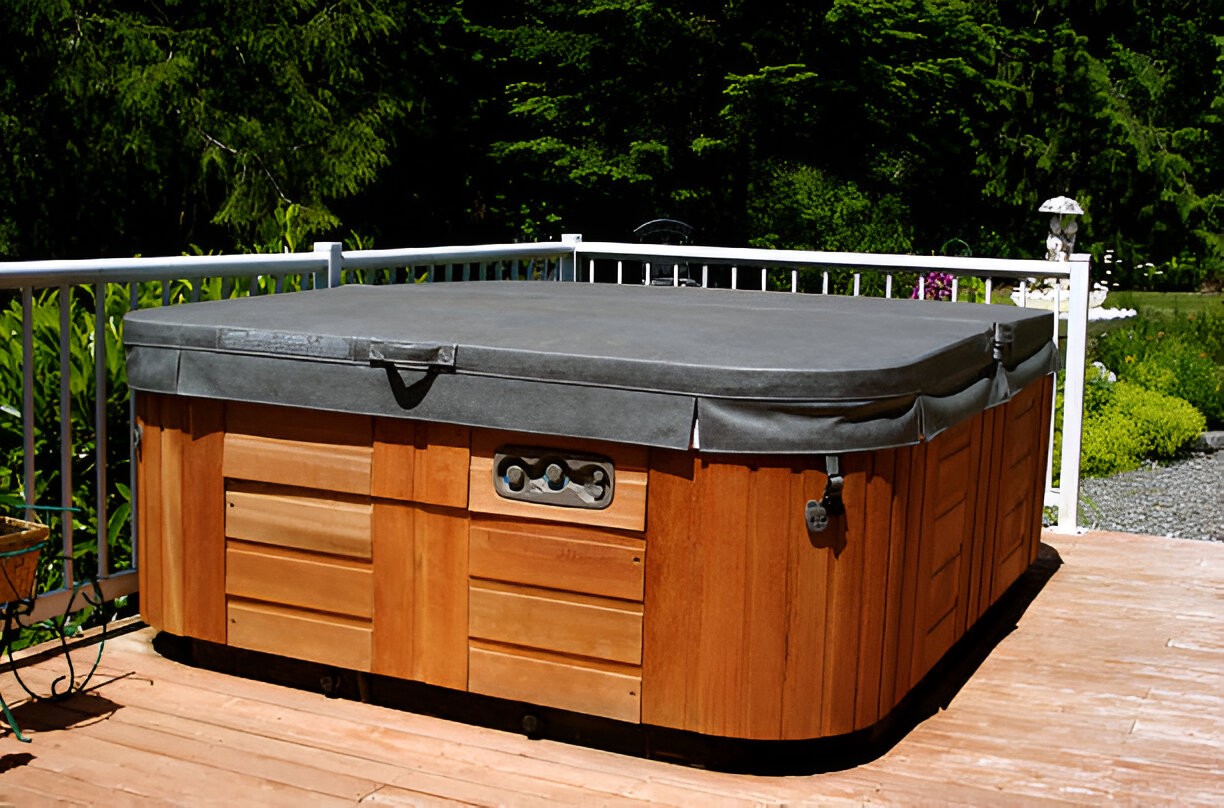Durable Hot Tub Covers Built for Canada: Square, Rectangle, and More
Posted by Northern Hot Tub Covers on 13th Aug 2025
Hot tubs are an amazing way to relax and unwind, especially in colder climates like Canada. But one thing many people overlook is the importance of a good hot tub cover. The right cover doesn’t just keep your water clean—it saves energy, protects your tub from weather damage, and even improves safety around the home.
If you’re in the market for a new square or rectangular hot tub cover—especially here in Canada—there are a few key things to know before making your purchase. This guide breaks down the essentials to help you make a smart, informed choice that will hold up well in changing outdoor conditions and provide long-lasting performance.
Table of Contents
- Why the Shape of Your Hot Tub Cover Matters
- Understanding Hot Tub Covers Designed for Canadian Weather
- What Makes a Great Square or Rectangle Hot Tub Cover?
- Key Materials and Construction Features to Look For
- How to Care for Your Hot Tub Cover to Maximize Lifespan
- FAQs About Hot Tub Covers

Why the Shape of Your Hot Tub Cover Matters
You might think, “A cover is a cover, right?” But the reality is that shape plays a huge role in how well your cover protects your hot tub. The most common shapes are square and rectangle, and the choice depends mainly on your tub’s design.
A snug-fitting cover that matches your tub’s shape creates a tight seal. This helps trap heat inside, keeps debris and moisture out, and reduces evaporation. If the cover doesn’t fit well—say, a rectangular cover on a square tub—gaps can lead to heat loss and higher energy bills.
For example, if you own a square tub, a dedicated square hot tub cover that fits perfectly will do a better job retaining heat than a generic rectangular cover that’s slightly too large. The same goes for rectangular tubs—you want a rectangle hot tub cover designed specifically for that shape.
Understanding Hot Tub Covers Designed for Canadian Weather
Canada’s climate is famously tough on outdoor gear, and hot tub covers are no exception. We deal with everything from freezing cold temperatures and heavy snow to intense summer sun and UV rays.
Because of this, hot tub covers made or selected for Canadian conditions usually have:
- Thicker insulation foam: This helps keep heat in during cold months and cuts down energy costs. The foam is often tapered—thicker in the middle and thinner on the edges—to shed water and snow.
- Durable, weather-resistant vinyl: A good cover will have marine-grade vinyl that resists cracking, fading, and mildew.
- Waterproof sealing and reinforced stitching: Prevents water from soaking into the foam core, which can damage the cover over time.
- Rust-proof hardware: Such as zippers and handles that won’t corrode after exposure to snow and rain.
What Makes a Great Square or Rectangle Hot Tub Cover?
Whether your tub is square or rectangular, a great cover will:
- Fit perfectly. Measuring your hot tub carefully is the first step. Make sure to measure length and width exactly from edge to edge, and consider the corner radius if your tub has rounded corners.
- Have a strong core. The foam inside should be firm and sealed against moisture to maintain its insulating properties.
- Include safety features. If you have kids or pets, look for covers with secure locking straps to prevent accidental openings.
- Be easy to handle. Since covers can be heavy, especially in cold weather, consider ones with reinforced handles or compatibility with lifter systems for easier removal.
Many people overlook how critical the right taper and thickness of foam are. For example, a tapered 6” thick foam cover sheds snow better than a flat, thinner cover, which can pool water and damage the core.
Key Materials and Construction Features to Look For
A few materials and construction details can really make a difference:
- Vinyl: Look for premium marine-grade vinyl—about 28 oz per square yard. It’s tough, flexible, and holds up well to sun and moisture.
- Foam Density: Higher-density foam insulates better and resists compression, so your cover keeps working year after year.
- Sealed Foam Core: This prevents water absorption which can add weight and degrade insulation.
- Aluminum Support Channel: Adds rigidity to prevent sagging, especially important for larger rectangle covers.
- Reinforced Stitching: Prevents tears and extends the life of your cover.
How to Care for Your Hot Tub Cover to Maximize Lifespan
To get the most from your hot tub cover, it helps to:
- Clean regularly: Use mild soap and water to clean the vinyl, and rinse thoroughly. Avoid harsh chemicals that degrade the material.
- Apply vinyl protectant: This protects against UV damage and keeps the vinyl supple.
- Remove snow promptly: Heavy snow can weigh down the cover and cause damage over time.
- Inspect for damage: Check stitching, straps, and zippers often. Early repair prevents bigger issues.
- Use a cover lifter: This not only makes handling easier but reduces strain on the cover, extending its life.
FAQs About Hot Tub Covers
Q1: How do I know if I need a square or rectangular hot tub cover?
Measure your tub’s top dimensions carefully. If your tub is square, get a square hot tub cover that matches those dimensions. Rectangular tubs need a rectangle hot tub cover for the best fit and heat retention.
Q2: How often should I replace my hot tub cover in Canada?
Typically, covers last 3–5 years, depending on exposure and care. Harsh weather conditions and poor maintenance can shorten their lifespan, while proper care can extend it.
Q3: Does thicker foam make a big difference?
Yes! Thicker, tapered foam improves insulation and sheds snow better, which means better energy efficiency and less cover damage.
Q4: Can I use any cover in any Canadian region?
Not ideally. A cover suitable for mild climates might not hold up in areas with heavy snow or extreme cold. It’s worth getting a cover rated for your local weather.
Q5: Are all hot tub covers waterproof?
High-quality covers have waterproof vinyl and sealed foam cores, but cheaper covers can absorb water, getting heavy and less effective.
Final Thoughts
Choosing the right hot tub cover might seem like a small detail, but it can make a big difference in your hot tub experience—especially in Canada’s ever-changing weather. Whether you opt for a square or a rectangle hot tub cover, focus on fit, insulation, materials, and care. This will protect your investment and keep your hot tub inviting all year long.
If you’re ever in doubt, measuring twice and considering your regional climate needs will save you time, energy, and future frustration. After all, a well-chosen cover is the quiet hero that keeps your hot tub warm, clean, and ready whenever you are.
For more expert guidance and high-quality, Canadian-made options, you can visit Northern Hot Tub Covers—a trusted name in hot tub covers in Canada, built by people who understand the climate, the tubs, and the care they require.






